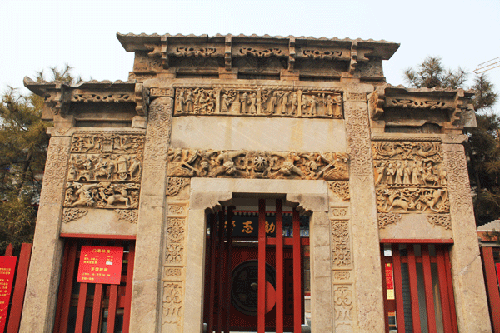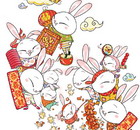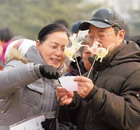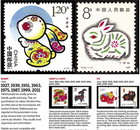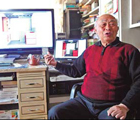Travel
The long road to scholarly honor
(CRIENGLISH.com)
Updated: 2011-02-18 16:09
 |
Large Medium Small |
After a visit to the Museum of the Imperial Examination System, you will never complain about today's exams again. Imagine spending nine days dining and sleeping in a small stone cubicle and answering endless exam questions. The Chinese imperial scholars who endured these conditions in hopes of beating out the competition for official posts would say that today's students have it easy.
According to Yao Yuanli, the owner of the museum, over the 1300-year reign of the Imperial Examination system, only around 700 hundred people have made it to the top, earning the title "Zhuangyuan" or "Number One Scholar."
Two substantial stone figurines, one of which was excavated from the tomb of Emperor Qianlong's fourth daughter, guard the museum's entrance, making it impossible to miss along the folk culture street in the capital's historical Gaobeidian village.
The 3000-square-meter museum showcases the history of China's Imperial Examination system through a diversified collection of stone and wood tablets, documents, and other relics.
|
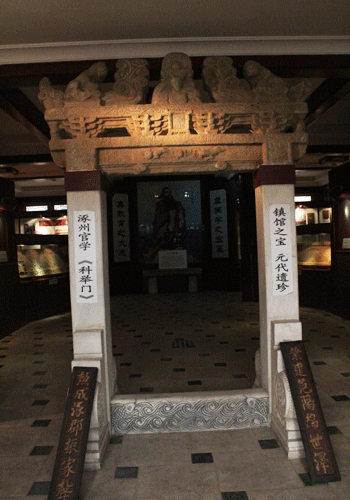 The centerpiece of the main exhibition hall is a stone gate depicting the ultimate pursuit of being a top scholar. [Photo/CRIENGLISH.com]
|
Yao established the privately-funded museum four years ago out of personal interest. To educate visitors about the global influence of the Chinese Imperial Examinations, Yao has spent the last sixteen years researching and traveling across China to search for valuable items. His collection includes over 3000 pieces.
The most precious antique in his collection is a stone gate which dates back to Yuan Dynasty (1279-1368 A.D.) and acts as the centerpiece of the main exhibition hall. Such gates were usually placed at the entrance of schools to indicate the students' wish to pass the imperial exam and make their name known.
The history of the examination system from its advent in Sui Dynasty (580-618 A.D.) to its demise in the late Qing Dynasty (1644-1911 A.D.) is demonstrated through a display of wood carvings, photos and documents; the main exhibition hall also dedicates a special glass case to documents reflecting on the international influence of China's Imperial Examination System. Among them is a quote from an article titled "China: A New Departure" in the September 1888 issue of The Westminster Review: "The Imperial Examination System of Chinese polity deserves termless laudability."
|
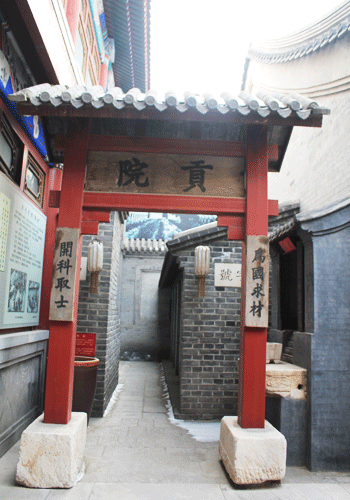 A replica of Gong Yuan, where the imperial examination took place. [Photo/CRIENGLISH.com]
|
The exhibition halls that surrounded the back courtyard explain the four phases scholars had to go through before being granted the chance to enter the imperial examination. The students had to pass various exams during the four stages, which were roughly equal to today's middle school level, high school level, preparatory period for college level and college level.
The imperial examination was held every three years. According to legend, one student tried 20 times to pass the exam, meaning he spent 60 years--his whole adult life-- preparing and taking the exams.
Scholars who pass top-level exams experience a significant change in status. Local officials would likely present a special banner for the scholar's family to hang at the entrance to their homes. The scholar's success would then be remembered for generations to come.
